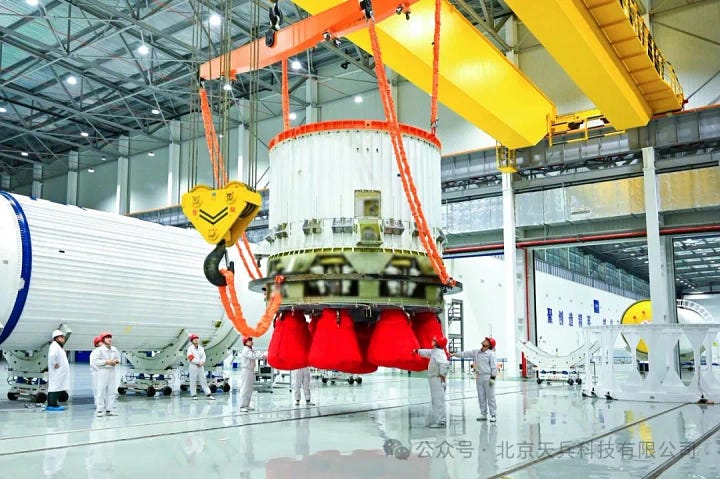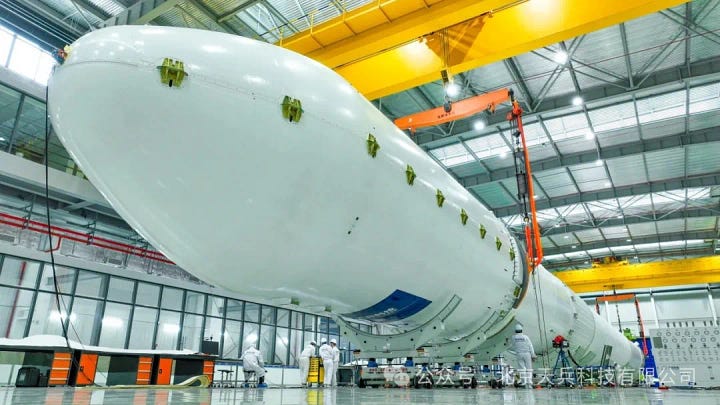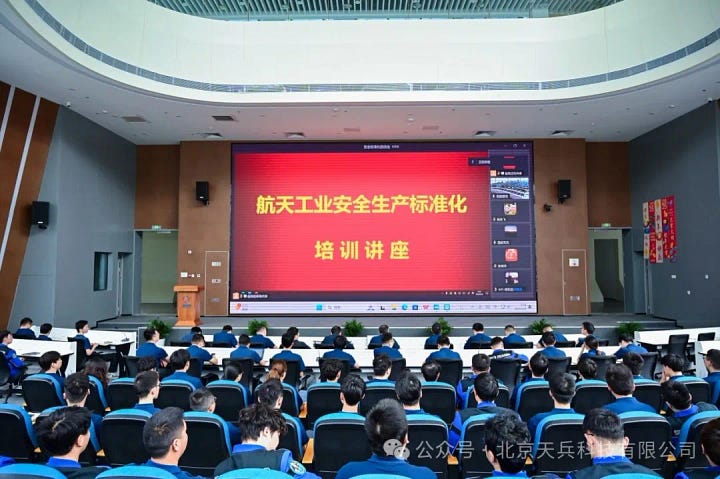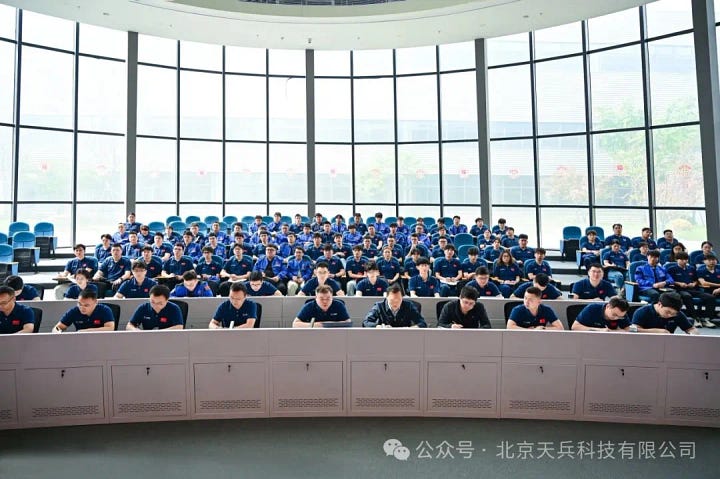Space Pioneer Moves Forward With Tianlong-3 Following New Fixes
Fixes to both hardware and the company.
Space Pioneer has been quiet since its rather dynamic static fire in June 2024, but recently the company has opened up further on what went wrong, along with what fixes have been made to the rocket and the company.
To begin with the hardware fixes, Space Pioneer has recently performed a static load tests of Tianlong-3’s1 first-stage’s engine section to verify hardware within it can handle stresses in excess of what will be experienced during flight and static fires. The static load tests verified a multitude of fixes in the engine section that are believed to have played a part in not holding down the first-stage from a static fire stand last year.


There are several reasons why the first-stage broke free, one of which was parts of the engine section being torn off by the stresses. While others were 820 tons of thrust being generated on a stand designed to hold down vehicles producing up to 600 tons, and the lack of other hardware to hold down the first-stage.
Since last year’s events, 127 improvements and fixes have been implemented on Tianlong-3, regarding the rocket’s structural strength, control systems, pressurization methods, and transportation methodology. Alongside this, 13 hardware verification tests have taken place too.


Alongside fixing hardware, Space Pioneer has also implemented many new safety measures across the company following consultation with regional and national government agencies. As the company explains:
“In terms of enterprise management, Space Pioneer has adopted 258 management improvements around the safety production responsibility system, safety regulations, safety training, safety hazard investigation, risk prevention measures, emergency plans, and employee health and wellness, and entrusted the Safety Assessment Center of China Aerospace Science and Industry Corporation to conduct all-round "space industry safety production standardization" training and inspection for Space Pioneer. It also commissioned the Safety Assessment Center of China Aerospace Science and Industry Group to conduct all-round “aerospace industry safety production standardization” training and inspection for Space Pioneer, and carry out acceptance and evaluation based on the first-grade safety standard of the military industry and aerospace industry in an effort to make Space Pioneer a commercial aerospace enterprise with the highest standard of the safety system and the best implementation.”
“We would like to thank the National Space Administration, local governments at all levels, users and all sectors of society for their tolerance and support for Space Pioneer. All members of Space Pioneer will thoroughly implement the central leadership's instructions to "adhere to safe development and gradually release the development potential of commercial space", handle the dialectical relationship between development and safety, put stability first, seek progress in stability, and do a good job in all scientific research and production work in a rigorous, careful and practical manner, and make new and greater contributions to China's commercial space industry.”
If there are any problems with this translation please reach out and correct me.


In early June of this year, Space Pioneer was preparing to re-attempt its static fire campaign, this time at sea near Haiyang on the HOS-1 floating platform, newly prepared for testing and launches. This time around Tianlong-3’s second-stage is being prepared for testing first, equipped with a TH-12V engine without its vacuum-optimized nozzle extension. As of June 10th, the second-stage was onboard HOS-1, but no sightings of the floating platform have happened since, with rumors of removal for hardware changes.
Between December 2024 and last February, Space Pioneer officials disclosed that they were aiming to have Tianlong-3 perform six flights in 2025, beginning in May, from either the Jiuquan Satellite Launch Center or Wenchang Commercial Space Launch Site. Due to static fires still not having taken place, it is obvious that the company’s schedule has moved back, likely to September for a debut flight. Regardless, Tianlong-3 flying more than once this year would be an impressive feat for the company.
Tianlong-3 is a two-stage liquid-fuelled partially reusable launch vehicle expected to be capable of carrying 17,000 kilograms to low Earth orbit.



